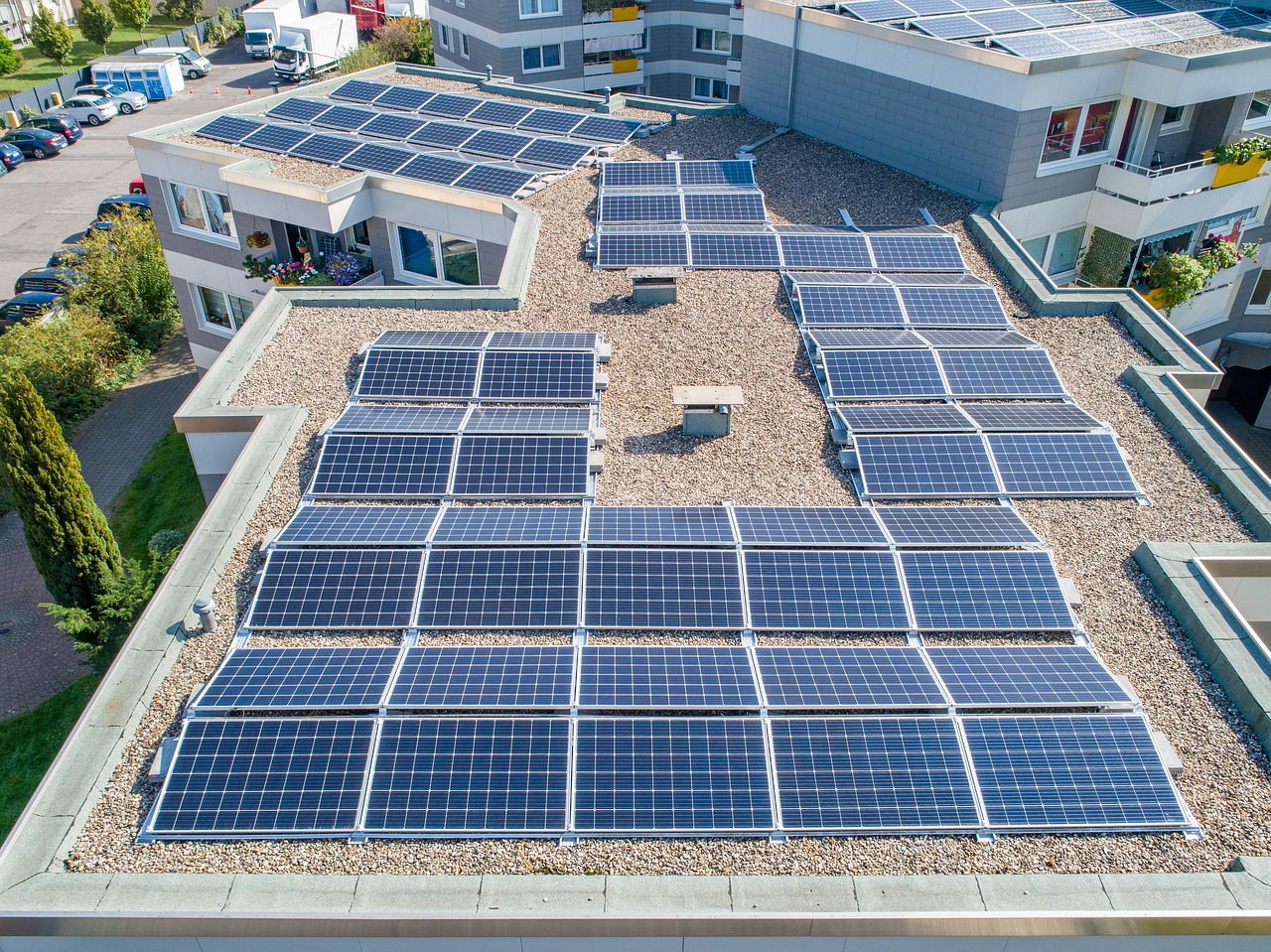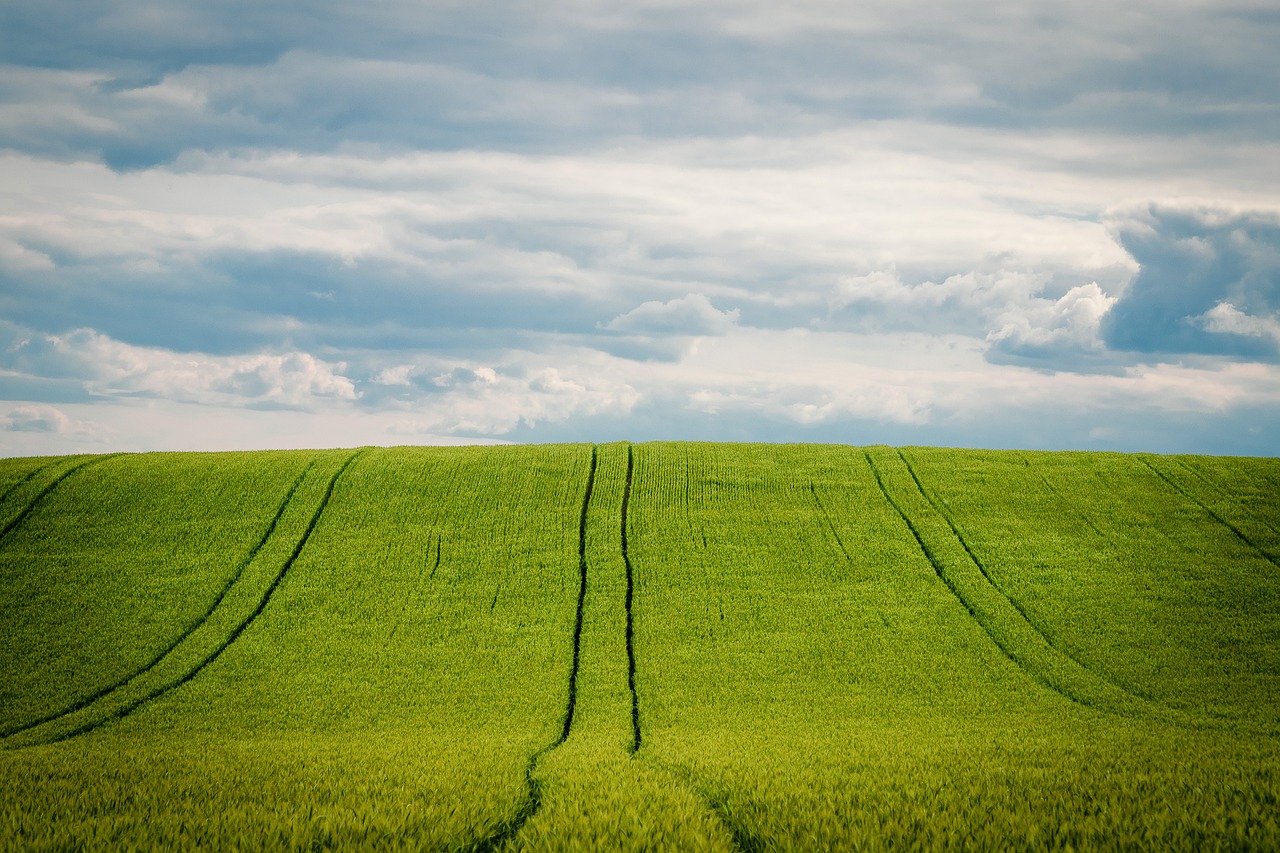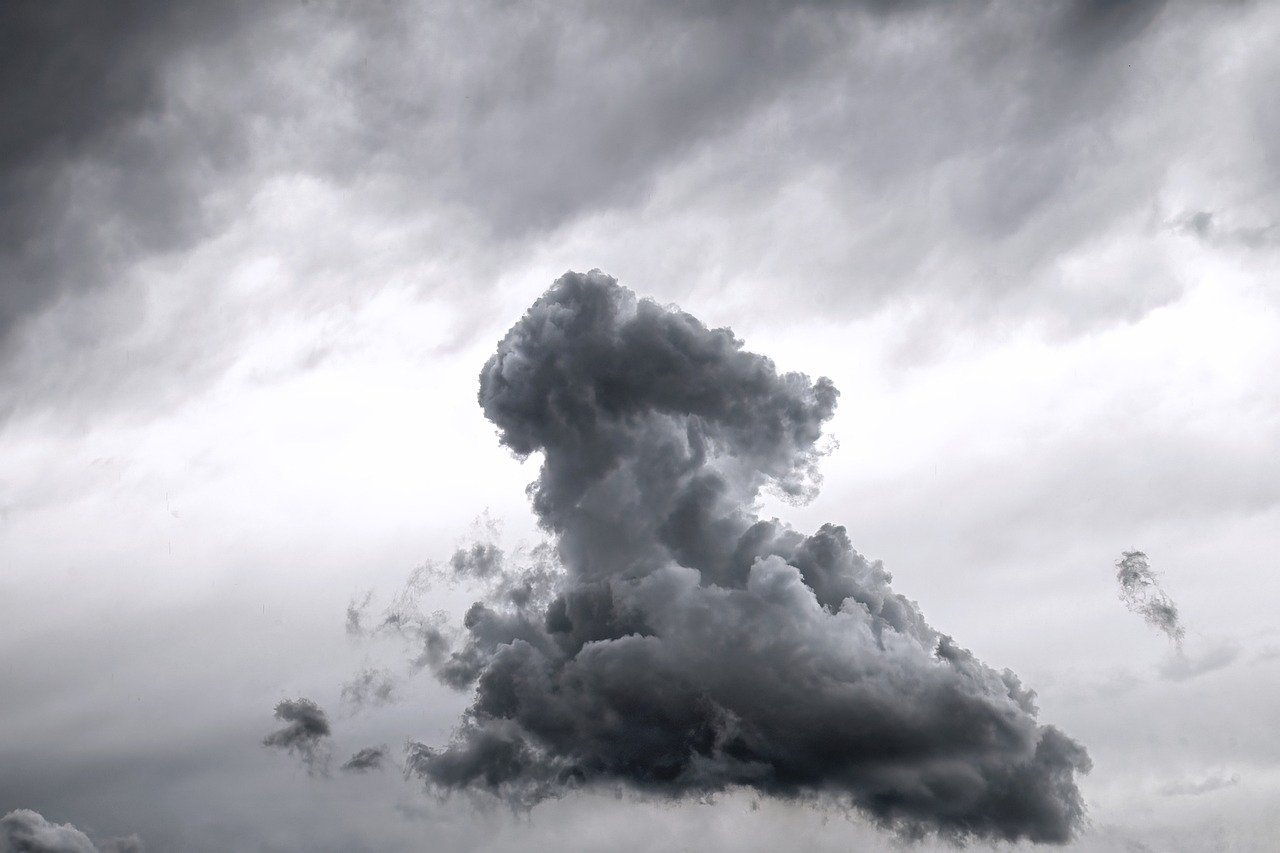The Effect of Climate Change on Food Prices
This article explores how climate change impacts food prices globally, examining various factors including crop yields, supply chain disruptions, and economic implications for consumers and producers alike.
Climate change refers to significant alterations in global temperatures and weather patterns over time. While it's a natural phenomenon, human activities—like burning fossil fuels, deforestation, and industrial processes—have accelerated these changes, leading to dire consequences for our environment. The rise in greenhouse gases traps heat, causing temperatures to soar, ice caps to melt, and sea levels to rise. These changes set the stage for understanding how agriculture and food production are affected. Imagine a world where traditional farming seasons are disrupted, and crops that once thrived in certain climates struggle to survive. This is the reality we face as climate change continues to unfold.
One of the most significant impacts of climate change is its effect on crop yields. Altered weather patterns can lead to unexpected droughts or excessive rainfall, both of which can decimate crops. Farmers are finding it increasingly challenging to predict the best times to plant and harvest, creating a ripple effect that leads to increased food scarcity and rising prices. The relationship between climate change and agriculture is like a delicate dance; when one partner stumbles, the entire performance is thrown off balance.
Extreme weather events—such as droughts, floods, and hurricanes—are becoming more frequent and severe due to climate change. These events disrupt agricultural production, causing immediate reductions in crop yields. For instance, a drought can lead to a significant drop in corn production, resulting in a spike in corn prices, which in turn affects the prices of many food products that rely on corn as an ingredient. The long-term effects on food supply chains can be devastating, leading to a cycle of scarcity and inflated prices.
Let’s take a closer look at specific regions that have experienced drastic yield changes due to climate-related events. For example, in Sub-Saharan Africa, erratic rainfall patterns have led to severe food shortages, driving up prices and making it difficult for local families to afford basic necessities. Similarly, in the Midwest United States, farmers have reported fluctuating yields due to unpredictable weather, affecting not just local markets but also global food supply chains.
Farmers are not without hope, however. Various adaptation strategies can be implemented to mitigate the effects of climate change on crop yields. These include:
- Implementing drought-resistant crop varieties
- Utilizing advanced irrigation techniques
- Practicing crop rotation to enhance soil health
By adopting these strategies, farmers can stabilize food prices and ensure a more resilient agricultural system.
Climate change also influences the prevalence and distribution of agricultural pests and diseases. Warmer temperatures can create a more hospitable environment for pests, leading to increased infestations. This not only raises the costs for farmers, who must invest in more pesticides, but it also results in higher prices for consumers, as the cost of production increases.
Another critical aspect of how climate change affects food prices is through supply chain disruptions. The journey from farm to table is complex, and any hiccup along the way can lead to price fluctuations. Transportation challenges, storage issues, and market access are all affected by climate change, making it increasingly difficult to maintain stable food prices.
Rising sea levels and extreme weather can hinder transportation routes, increasing costs and delays in getting food products to market. For instance, if a hurricane damages key shipping ports, the cost of transporting goods can skyrocket, leading to higher prices at grocery stores.
Additionally, climate change impacts the effectiveness of food storage and preservation methods. Increased humidity and temperature fluctuations can lead to higher spoilage rates, which means more food is wasted and prices go up. Imagine buying fresh produce only to find it spoiled within days; this is becoming a common scenario as climate conditions change.
The economic implications of rising food prices due to climate change can be severe. As prices climb, vulnerable populations face increased food insecurity, necessitating urgent policy interventions to address these challenges. The ripple effect of rising food prices can destabilize economies, leading to reduced consumer spending and overall economic instability.
Food security is a pressing concern as prices rise. Vulnerable populations, particularly in developing nations, may struggle to afford basic food items, leading to malnutrition and health issues. Addressing these challenges requires a coordinated global effort to implement policies that support sustainable agriculture and food distribution.
Finally, we must consider how global markets react to increasing food prices driven by climate change. Shifts in trade policies and consumer behavior can lead to a reorganization of global food supply chains. For instance, countries may begin to prioritize local food production over imports, which can have both positive and negative effects on global trade.
Q: How does climate change affect food prices?
A: Climate change impacts food prices by affecting crop yields, disrupting supply chains, and increasing the prevalence of pests and diseases, all of which can lead to higher production costs.
Q: What are some adaptation strategies for farmers?
A: Farmers can implement drought-resistant crops, advanced irrigation techniques, and crop rotation to mitigate the effects of climate change on their yields.
Q: Why are vulnerable populations at risk?
A: As food prices rise, vulnerable populations may struggle to afford basic necessities, leading to food insecurity and health issues.

Understanding Climate Change
Climate change refers to significant alterations in global temperatures and weather patterns over time. While climate change is a natural phenomenon, human activities—especially the burning of fossil fuels, deforestation, and industrial processes—have accelerated these changes at an alarming rate. The consequences of climate change are profound, affecting not just the environment but also our daily lives, particularly in the realm of agriculture and food production.
To truly grasp how climate change influences food prices, it’s essential to understand its primary causes and effects. The greenhouse gases emitted by human activities trap heat in the atmosphere, leading to a phenomenon known as the greenhouse effect. This results in rising global temperatures, which can disrupt weather patterns and lead to extreme weather events. Here’s a breakdown of some key aspects:
- Rising Temperatures: Increased temperatures can affect the growth cycles of crops, leading to lower yields.
- Changing Precipitation Patterns: Some regions may experience droughts while others face excessive rainfall, both of which can harm agricultural productivity.
- Increased Frequency of Extreme Weather: Natural disasters, such as hurricanes and floods, can devastate crops and disrupt supply chains.
These changes don't happen in isolation; they interact in complex ways. For instance, altered rainfall can lead to soil degradation, making it harder for crops to thrive. Additionally, the rise in temperatures can create favorable conditions for pests and diseases, further threatening food production. This is why understanding climate change is crucial for anyone concerned about food security and prices.
Moreover, the effects of climate change are not uniform across the globe. Some regions, especially those already vulnerable due to economic instability or poor infrastructure, are more susceptible to the adverse effects. For example, sub-Saharan Africa and parts of South Asia are particularly at risk, where agriculture is heavily reliant on predictable weather patterns. The implications of this are staggering, as food prices can skyrocket in response to reduced crop yields, leading to increased hunger and economic strain.
In summary, understanding climate change is not just about recognizing the scientific facts; it’s about acknowledging the real-world impacts it has on agriculture, economies, and ultimately, our daily lives. As we delve deeper into this topic, we will explore the specific ways in which climate change affects crop yields and food prices, setting the stage for a broader discussion on the future of food security.

Impact on Crop Yields
Climate change is not just a distant threat; it's a reality that is reshaping the agricultural landscape as we know it. One of the most significant impacts is on crop yields. As temperatures rise and weather patterns shift, farmers are finding it increasingly challenging to produce the same amount of food they once could. The effects are profound, leading to a potential crisis in food availability. Imagine trying to grow your favorite vegetables in a garden that suddenly experiences unexpected frosts in summer or scorching heat in spring. This unpredictability is becoming the norm for farmers around the globe.
In particular, extreme weather events such as droughts, floods, and hurricanes have become more frequent and intense. These events not only damage crops directly but also disrupt the entire agricultural cycle. For instance, a drought can lead to a substantial reduction in water supply, making it nearly impossible for crops to thrive. Conversely, heavy rains can flood fields, washing away seeds and causing soil erosion. The result? A significant drop in crop yields, which inevitably leads to higher food prices globally.
Extreme weather events can be likened to a double-edged sword for farmers. On one side, they can decimate crops in a matter of hours, while on the other, they can create long-lasting changes in the soil and ecosystem, making recovery difficult. For example, a farmer in California may face a severe drought one year, leading to a 30% reduction in their almond yield. The following year, they might experience a flood that destroys what little crop they managed to grow. This cycle not only affects the farmer's income but also has a ripple effect on food prices across the country.
Let's take a closer look at some regions that have felt the brunt of climate change on crop yields:
| Region | Impact | Crop Affected |
|---|---|---|
| Sub-Saharan Africa | Increased drought frequency | Corn, Sorghum |
| South Asia | Flooding and erratic monsoons | Rice, Wheat |
| North America | Extreme heat and wildfires | Barley, Grapes |
These examples illustrate how climate change is not just a theoretical problem; it's affecting real people and real crops. As farmers struggle to adapt to these changes, the implications for food prices become increasingly concerning. The more crops that fail, the less food there is available, and consequently, prices begin to soar.
So, what can farmers do to combat these challenges? There are various adaptation strategies that can be employed to stabilize crop yields despite the changing climate. Some farmers are turning to drought-resistant crops or implementing advanced irrigation techniques to conserve water. Others are adopting crop rotation practices to maintain soil health and resilience. By diversifying their crops and using innovative farming methods, they can mitigate some of the adverse effects of climate change. However, these strategies often require significant investment and knowledge, which may not be accessible to all farmers.
In conclusion, the impact of climate change on crop yields is a complex issue that affects not just farmers but consumers worldwide. As crop yields decline, food prices are likely to rise, leading to economic instability and food insecurity for many. It's a cycle that requires urgent attention and action from all stakeholders involved in food production and distribution.
- How does climate change affect food prices? Climate change leads to reduced crop yields due to extreme weather events, pests, and diseases, which ultimately drives up food prices.
- What are some examples of adaptation strategies for farmers? Farmers can use drought-resistant crops, advanced irrigation techniques, and crop rotation to adapt to climate changes.
- Which regions are most affected by climate change in terms of agriculture? Regions like Sub-Saharan Africa, South Asia, and North America are experiencing significant impacts on their agricultural output due to climate change.

Extreme Weather Events
Extreme weather events, such as droughts, floods, and hurricanes, have become increasingly common due to climate change, and their impact on agriculture is profound. These events can lead to immediate and drastic reductions in crop yields, which not only affects farmers but also ripples through the entire food supply chain. Imagine a farmer who has invested time, resources, and hope into nurturing a field of crops, only to see it devastated by an unexpected flood. This scenario is becoming all too familiar in many regions around the world.
When these extreme weather events occur, they disrupt the delicate balance of food production. For instance, a drought can lead to a significant decrease in water availability, stunting crop growth and leading to food scarcity. Conversely, excessive rainfall can cause crops to rot in the fields, rendering them unharvestable. The unpredictability of these weather patterns creates a climate of uncertainty for farmers, making it challenging to plan for the future.
Furthermore, the repercussions of these events extend beyond the immediate loss of crops. They can cause long-term shifts in agricultural practices and soil health, which may take years to recover. The costs associated with recovery efforts can be astronomical, leading to increased prices for consumers. To illustrate this point, consider the following table that outlines the effects of extreme weather events on crop yields in various regions:
| Region | Type of Event | Impact on Crop Yields | Estimated Cost Increase (%) |
|---|---|---|---|
| Midwest USA | Drought | 30% decrease | 15% |
| South Asia | Flood | 40% decrease | 25% |
| Western Europe | Heatwave | 20% decrease | 10% |
As we can see from the table, the effects of extreme weather events vary by region and type of event, but the overall trend is clear: these occurrences lead to significant declines in agricultural output and subsequent increases in food prices. This situation creates a vicious cycle where higher prices lead to increased food insecurity, especially for vulnerable populations who are already struggling to make ends meet.
In conclusion, the impact of extreme weather events on food production is a pressing issue that cannot be ignored. As climate change continues to alter our planet's weather patterns, it is crucial for farmers, policymakers, and consumers to work together to find solutions that can mitigate these effects. By investing in sustainable agricultural practices and improving infrastructure to withstand these events, we can help stabilize food prices and ensure that everyone has access to the food they need.
- What are extreme weather events? Extreme weather events refer to significant deviations from the average weather patterns, including droughts, floods, hurricanes, and heatwaves.
- How does climate change affect extreme weather events? Climate change increases the frequency and intensity of extreme weather events, making them more unpredictable and severe.
- What can farmers do to adapt to these changes? Farmers can implement sustainable practices, diversify crops, and invest in better irrigation and drainage systems to mitigate the impacts of extreme weather.
- Why do extreme weather events lead to higher food prices? These events can cause crop failures, supply chain disruptions, and increased costs of production, all of which contribute to rising food prices for consumers.

Case Studies of Affected Regions
To truly grasp the profound impact of climate change on food prices, it's essential to look at specific regions that have been significantly affected. These case studies reveal not only the immediate consequences of climate-related events but also the long-term implications for food security and economic stability. One notable example is the Sahel region of Africa, where rising temperatures and erratic rainfall patterns have drastically reduced crop yields. Farmers in countries like Mali and Niger have experienced a decline in staple crops such as millet and sorghum, leading to food shortages and skyrocketing prices. As a result, the local economies have suffered, pushing vulnerable populations deeper into poverty.
Another illustrative case is found in the Midwestern United States, often referred to as the "breadbasket" of the country. Here, extreme weather events, including severe droughts and heavy flooding, have disrupted traditional farming practices. For instance, the 2020 growing season saw a significant reduction in corn and soybean yields due to unexpected weather patterns. This led to not only a rise in domestic food prices but also affected global markets, as the U.S. is a leading exporter of these crops. Farmers faced increased costs for irrigation and crop insurance, which ultimately trickled down to consumers.
In South Asia, particularly in countries like India and Bangladesh, the situation is equally dire. The monsoon season, crucial for agriculture, has become increasingly unpredictable. Flooding can devastate crops in a matter of days, while prolonged dry spells can lead to droughts that decimate yields. The Food and Agriculture Organization (FAO) reported that in 2021, rice production in Bangladesh fell by over 10% due to these extreme weather conditions, resulting in a surge in rice prices that affected millions of consumers.
To further illustrate the economic ramifications, consider the following table that summarizes the impact of climate change on food prices in these regions:
| Region | Key Crop | Impact of Climate Change | Resulting Price Increase (%) |
|---|---|---|---|
| Sahel Region | Millet | Reduced rainfall and increased temperatures | 35% |
| Midwestern U.S. | Corn | Drought and flooding | 25% |
| South Asia | Rice | Unpredictable monsoon patterns | 30% |
These case studies highlight the interconnectedness of climate change, agricultural productivity, and food pricing. As we witness these changes, it becomes increasingly clear that addressing climate change is not just an environmental issue but a pressing economic concern that affects us all. The need for sustainable agricultural practices and innovative solutions to combat these challenges has never been more urgent.
- How does climate change affect food prices? Climate change leads to reduced crop yields, supply chain disruptions, and increased costs for farmers, ultimately driving up food prices.
- What regions are most affected by climate change in terms of food production? Regions like the Sahel in Africa, the Midwestern U.S., and South Asia are significantly impacted by climate change, leading to increased food prices.
- What can farmers do to adapt to climate change? Farmers can adopt sustainable practices, invest in drought-resistant crops, and utilize advanced technologies to mitigate the effects of climate change on agriculture.
- What are the long-term implications of rising food prices? Rising food prices can lead to increased food insecurity, economic instability, and greater disparities among vulnerable populations.

Adaptation Strategies
As the effects of climate change become increasingly pronounced, it is crucial for farmers and agricultural stakeholders to adopt that can help mitigate these impacts. These strategies not only aim to protect crop yields but also serve to stabilize food prices in the face of unpredictable climate patterns. One effective approach is the implementation of climate-resilient agricultural practices. This includes diversifying crop varieties to ensure that farmers are not solely dependent on a single crop, which can be particularly vulnerable to climate fluctuations. For instance, incorporating drought-resistant crops can help maintain yields during periods of low rainfall.
Another vital strategy is the adoption of precision agriculture, which utilizes technology to monitor and manage field variability in crops. By employing tools such as satellite imagery and soil sensors, farmers can make informed decisions about irrigation, fertilization, and pest control. This not only enhances productivity but also reduces waste, ultimately leading to lower costs for consumers. Furthermore, integrating agroecological practices can improve soil health and biodiversity, creating more resilient farming systems that can better withstand climate stresses.
In addition to these practices, farmers are encouraged to engage in collaborative initiatives. By working together within their communities, farmers can share knowledge, resources, and tools that can enhance their adaptive capacity. For instance, forming cooperatives can provide farmers with access to shared equipment and bulk purchasing of inputs, reducing individual costs and fostering a collective approach to resilience.
Moreover, government policies play a pivotal role in supporting adaptation strategies. Financial incentives, such as grants or low-interest loans for sustainable practices, can encourage farmers to invest in climate-smart technologies. Additionally, educational programs that provide training on new techniques and technologies can empower farmers to implement effective adaptations. Overall, a multifaceted approach that combines individual farmer initiatives, community collaboration, and supportive government policies is essential for addressing the challenges posed by climate change.
To summarize, the adaptation strategies that farmers can employ to combat the effects of climate change are diverse and multifaceted. By focusing on resilience, technology, and community engagement, we can work towards a more stable food system that is less susceptible to the whims of a changing climate.
- What are adaptation strategies in agriculture? Adaptation strategies in agriculture refer to practices and approaches that farmers can implement to cope with the effects of climate change, ensuring sustainable production and stability in food prices.
- How can technology help in adapting to climate change? Technology can assist farmers by providing tools for precision agriculture, allowing for better monitoring of crop conditions, efficient resource management, and timely interventions to protect yields.
- Why is community collaboration important for farmers? Community collaboration allows farmers to share resources, knowledge, and support, creating a stronger collective response to climate challenges and reducing individual costs.
- What role do government policies play in adaptation? Government policies can provide financial support, incentives, and education to help farmers adopt sustainable practices and technologies that enhance their resilience to climate change.

Pests and Diseases
Climate change is not just about rising temperatures and melting ice caps; it also brings a surge in the prevalence and distribution of agricultural pests and diseases. As the climate shifts, so do the habitats of these unwanted guests, leading to a scenario where farmers must constantly battle new threats to their crops. Imagine a farmer trying to grow corn in a field that was once thriving, only to find it now under siege from a new breed of pest that has found its way there due to warmer temperatures. This is no longer just a hypothetical situation; it’s a reality many are facing today.
As temperatures rise, pests such as aphids, whiteflies, and spider mites are expanding their territories, moving into regions that were previously too cold for them to survive. This shift can lead to increased crop damage and, consequently, higher costs for farmers. More pest pressure means more pesticide use, which not only raises the cost of production but can also have negative environmental impacts. Farmers find themselves in a vicious cycle: to protect their crops, they must invest more in pest control, leading to increased prices for consumers.
Moreover, diseases like fungal infections and bacterial blights are also on the rise. Warmer temperatures and increased humidity create perfect breeding grounds for these pathogens. For instance, the wheat rust fungus has become more prevalent in various regions, threatening wheat production globally. The implications are dire: as crop yields decline due to these diseases, food scarcity becomes a pressing issue, and prices inevitably rise. In fact, studies have shown that a mere 10% decrease in crop yield can lead to a significant price increase in the market.
Farmers are not just passive victims in this scenario; many are actively seeking solutions to combat these challenges. Some are turning to integrated pest management (IPM) strategies, which focus on sustainable practices that minimize the use of chemical pesticides. These methods can include crop rotation, planting pest-resistant varieties, and introducing natural predators to control pest populations. However, these strategies require knowledge, resources, and sometimes significant upfront investment, which can be a barrier for many smallholder farmers.
In summary, the impact of climate change on pests and diseases is a complex issue that intertwines with agricultural productivity and food prices. As farmers struggle to adapt to these new challenges, consumers can expect to see fluctuations in food prices as a direct result. The fight against pests and diseases is not just a local battle; it’s a global concern that requires collaboration and innovative solutions to ensure food security for all.
- How does climate change affect pest populations? Climate change alters weather patterns, allowing pests to thrive in regions that were previously inhospitable to them.
- What are some common pests that are increasing due to climate change? Common pests include aphids, whiteflies, and spider mites, which are expanding their territories as temperatures rise.
- What strategies can farmers use to combat pests? Farmers can employ integrated pest management strategies, such as crop rotation and using pest-resistant crop varieties, to mitigate the impact of pests.
- How does the increase in pests affect food prices? An increase in pests leads to lower crop yields, which can drive up food prices due to scarcity.

Supply Chain Disruptions
Climate change is not just a distant threat; it’s a reality that is reshaping the way we produce, transport, and consume food. One of the most significant ways this transformation manifests is through . These disruptions can be likened to a domino effect, where one issue leads to another, ultimately impacting food prices and availability. For instance, imagine a farmer whose crops are affected by extreme weather. This not only reduces their yield but also affects the entire supply chain—from transportation to storage, and finally to the consumer's table.
Transportation challenges are at the forefront of these disruptions. Rising sea levels and increased frequency of extreme weather events, such as hurricanes and floods, can severely hinder transportation routes. When roads become impassable or ports are shut down, the cost of moving food products skyrockets. This isn’t just an inconvenience; it translates into higher prices for consumers. According to recent studies, logistics costs can account for up to 30% of total food prices, making it critical to address these challenges.
Moreover, storage and preservation methods are also affected by climate change. As temperatures rise, the effectiveness of traditional food storage techniques diminishes. For example, higher humidity levels can lead to increased spoilage rates for perishable goods. This not only results in food waste but also drives prices up as consumers are forced to pay more for the dwindling supplies. A recent report highlighted that nearly 40% of food produced is wasted due to inadequate storage, which is exacerbated by changing climate conditions.
To illustrate the impact of supply chain disruptions on food prices, let’s take a look at the following table:
| Factor | Impact on Food Prices |
|---|---|
| Transportation Delays | Increased logistics costs lead to higher consumer prices |
| Storage Inefficiencies | Higher spoilage rates result in reduced availability and increased prices |
| Market Access Issues | Limited access to markets can lead to supply shortages and price spikes |
In summary, the ripple effects of climate change on supply chains are profound and multifaceted. They not only disrupt the flow of food from producers to consumers but also inflate prices, making it more challenging for families to afford basic necessities. As we navigate this complex landscape, it’s crucial to consider innovative solutions that can bolster resilience in our food systems. This includes investing in infrastructure that can withstand extreme weather, improving storage technologies, and promoting sustainable agricultural practices.
- How does climate change specifically affect food supply chains?
Climate change leads to extreme weather events, rising sea levels, and changing temperature patterns, which disrupt transportation, storage, and overall food production processes.
- What are the economic implications of these disruptions?
Higher food prices can lead to increased food insecurity, especially among vulnerable populations, and can strain overall economic stability.
- What can be done to mitigate these supply chain issues?
Investing in resilient infrastructure, adopting new storage technologies, and implementing sustainable farming practices are essential steps to mitigate these challenges.

Transportation Challenges
When we think about climate change, our minds often wander to melting ice caps and rising temperatures, but have you ever considered how it affects the very food on your plate? Transportation challenges are a critical yet often overlooked aspect of this global phenomenon. As climate change wreaks havoc on our planet, it disrupts transportation routes that are essential for moving food from farms to our tables. Imagine a world where your favorite fruits and vegetables are suddenly hard to find or, worse, too expensive to buy. This is the reality we face as extreme weather events become more frequent and severe.
Rising sea levels can inundate coastal roads and ports, leading to significant delays in food delivery. Picture a bustling port where ships are unable to dock due to flooding; this not only affects local markets but has a ripple effect on global food supply chains. Moreover, extreme weather events like hurricanes and heavy storms can cause road closures and damage to infrastructure, making it nearly impossible to transport goods efficiently. According to recent studies, these disruptions can lead to a staggering 20-30% increase in transportation costs, which ultimately gets passed on to consumers in the form of higher food prices.
Additionally, the unpredictability of weather patterns complicates logistics planning. For instance, a farmer may have a bumper crop one year, but if a sudden storm hits just before harvest, the transportation of that crop can be delayed, leading to spoilage and waste. This situation is not just a loss for the farmer; it affects everyone in the supply chain, from distributors to consumers. The following table illustrates the potential impact of various climate-related events on transportation efficiency:
| Climate Event | Impact on Transportation | Estimated Cost Increase |
|---|---|---|
| Flooding | Road and port closures | 20-30% |
| Hurricanes | Infrastructure damage | 15-25% |
| Drought | Increased fuel costs | 10-20% |
Furthermore, storage and preservation methods are also affected by climate change, which we will discuss next. When transportation is delayed, food products often need to be stored for longer periods, leading to spoilage and waste. This is particularly concerning for perishable goods like dairy, fruits, and vegetables, which have limited shelf lives. As a result, the overall availability of fresh produce can dwindle, driving prices even higher.
In summary, the transportation challenges posed by climate change are multifaceted and far-reaching. They not only affect the efficiency of getting food from point A to point B but also have significant economic implications for consumers and producers alike. As we navigate this complex landscape, it becomes increasingly clear that addressing these challenges is crucial for ensuring food security and stabilizing prices in an uncertain future.
- How does climate change impact food transportation? Climate change causes extreme weather events and rising sea levels, which disrupt transportation routes and increase costs.
- What are the economic implications of increased transportation costs? Higher transportation costs lead to increased food prices, affecting consumer spending and overall economic stability.
- What can be done to mitigate these transportation challenges? Investing in resilient infrastructure and improving logistics planning can help reduce the impact of climate change on food transportation.

Storage and Preservation
Climate change is not just a distant threat; it's a reality that impacts every aspect of our food system, including how we store and preserve our food. As temperatures rise and weather patterns become increasingly erratic, the effectiveness of traditional food storage methods is put to the test. For instance, higher humidity levels can lead to increased spoilage rates, while fluctuating temperatures can cause food to spoil faster than before. This scenario is not merely an inconvenience; it translates to higher costs for consumers and significant losses for producers. Imagine a world where your favorite fruits and vegetables are no longer available due to spoilage—this is the reality we may face if we don't adapt our storage practices.
One of the most pressing challenges is the impact of extreme weather on food preservation facilities. Flooding can damage storage warehouses, while heatwaves can lead to power outages that disrupt refrigeration systems. Farmers and distributors are increasingly finding themselves in a race against time to get their products to market before they spoil. The result? A ripple effect that raises prices for consumers and decreases the availability of fresh produce.
To combat these issues, innovative storage solutions are emerging. For example, temperature-controlled storage units and advanced preservation technologies are becoming more common. These methods not only help in maintaining the quality of food but also in extending its shelf life. However, the adoption of such technologies often comes with a hefty price tag, which can further inflate food prices. Here’s a quick look at some modern storage solutions:
| Storage Method | Benefits | Challenges |
|---|---|---|
| Temperature-Controlled Units | Maintains optimal conditions for food | High energy costs |
| Vacuum Sealing | Reduces spoilage and extends shelf life | Requires specialized equipment |
| Modified Atmosphere Packaging | Slows down the ripening process | Increased packaging costs |
Farmers are also exploring community-based storage solutions, where local groups pool resources to invest in better preservation technologies. This not only reduces costs but also fosters a sense of community and shared responsibility. However, these solutions require initial investment and a commitment from all parties involved, which can be a barrier in some regions.
Ultimately, the way we store and preserve food is crucial in the fight against rising food prices due to climate change. As we adapt to these new challenges, it is essential to focus on sustainable practices that not only protect our food supply but also ensure that it remains affordable for everyone. After all, food security is not just about availability; it's also about accessibility.
- How does climate change affect food storage? Climate change leads to increased spoilage rates and challenges in maintaining optimal storage conditions.
- What are some modern storage solutions? Temperature-controlled units, vacuum sealing, and modified atmosphere packaging are some effective methods.
- Why is community-based storage important? It helps reduce costs and fosters community involvement in food preservation.

Economic Implications
The economic implications of rising food prices due to climate change can be severe, impacting not just individual households but entire nations. When food prices soar, the first to feel the pinch are often the most vulnerable populations, including low-income families and those living in developing countries. These groups spend a larger portion of their income on food, making them particularly susceptible to price fluctuations. Imagine trying to stretch a dollar further while the cost of essentials keeps climbing; it’s a daunting task that many face daily.
As food prices rise, consumers are forced to make tough choices. They may opt for cheaper, less nutritious options or reduce their overall food intake. This shift not only affects individual health but also has broader implications for public health systems. The strain on these systems can lead to increased healthcare costs, compounding the challenges faced by families already struggling to make ends meet. Furthermore, the economic ripple effects can lead to a decrease in overall consumer spending, which can stifle economic growth.
In addition to impacting consumers, rising food prices also pose challenges for producers. Farmers may find it difficult to maintain profitability as they face higher costs for inputs such as seeds, fertilizers, and water. This can lead to a vicious cycle where farmers are unable to invest in sustainable practices or technology that could help them adapt to changing conditions. The result? A decrease in agricultural productivity and a further increase in food prices.
To illustrate the economic impact of climate change on food prices, consider the following table which outlines the projected increases in food prices over the next decade:
| Year | Projected Food Price Increase (%) |
|---|---|
| 2025 | 10% |
| 2030 | 20% |
| 2035 | 30% |
As seen in the table, the projected increases in food prices are alarming. These figures highlight the urgent need for policy interventions aimed at stabilizing food prices and ensuring food security. Governments and organizations must work together to implement strategies that not only address the immediate issues but also lay the groundwork for long-term solutions.
Moreover, the global market reacts to these rising prices in various ways. Countries that rely heavily on food imports may face trade deficits, leading to economic instability. In response, governments might implement export restrictions or tariffs, which can further exacerbate the problem. The interconnectedness of global markets means that a price spike in one region can have cascading effects worldwide, affecting everything from local economies to international relations.
In conclusion, the economic implications of rising food prices due to climate change are extensive and multifaceted. From consumer behavior to agricultural productivity, the effects are felt across the board. Addressing these challenges requires a concerted effort from all stakeholders, including governments, businesses, and consumers. Only through collaboration can we hope to mitigate the impacts of climate change on food prices and ensure a stable food supply for future generations.
- How does climate change directly affect food prices?
Climate change leads to unpredictable weather patterns, crop failures, and increased costs for farmers, all of which contribute to rising food prices. - Who is most affected by rising food prices?
Vulnerable populations, including low-income families and those in developing countries, are most affected as they spend a larger portion of their income on food. - What can be done to stabilize food prices?
Governments and organizations can implement policies that promote sustainable agriculture, improve supply chain efficiency, and provide support to affected communities.

Food Security Concerns
As the effects of climate change ripple through our food systems, the reality of food insecurity becomes increasingly alarming. Rising food prices, driven by fluctuating crop yields and disrupted supply chains, pose a significant threat, particularly to vulnerable populations. Imagine a family struggling to put meals on the table as the cost of basic staples skyrockets. This isn’t just a distant possibility; it’s a current reality for millions around the globe.
Food security is defined as having reliable access to a sufficient quantity of affordable, nutritious food. However, when climate change leads to unpredictable weather patterns, it directly impacts agricultural productivity. For instance, droughts can decimate crops, while floods can wash away entire harvests. These extreme events not only reduce the amount of food available but also inflate prices, making it even harder for low-income families to afford what they need.
According to recent studies, the number of people facing acute food insecurity is on the rise. In fact, the World Food Programme reports that approximately 811 million people went hungry in 2020, a number that is expected to increase as climate-related challenges worsen. This alarming trend necessitates immediate action and policy interventions to safeguard food security. Here are some of the key concerns:
- Increased Vulnerability: Low-income populations are often the hardest hit by rising food prices. They spend a larger portion of their income on food, leaving less for other essentials like healthcare and education.
- Nutrition Deficiencies: As prices rise, families may resort to cheaper, less nutritious food options, leading to a decline in overall health and increased susceptibility to diseases.
- Political Instability: Food shortages can lead to social unrest and political instability, as seen in various regions where protests erupted over rising food costs.
To combat these challenges, governments and organizations must implement effective strategies. This could include investing in sustainable agricultural practices, improving infrastructure to enhance food distribution, and providing financial support to farmers facing climate-related losses. Additionally, raising awareness about the importance of food security can encourage more individuals to contribute to local food systems, fostering community resilience.
In conclusion, the intersection of climate change and food security is a pressing issue that demands our attention. As food prices continue to rise, it is crucial to address the root causes and implement solutions that ensure everyone has access to the food they need. We must act now to create a more resilient food system that can withstand the challenges of climate change, ensuring that future generations do not face the same struggles.
Q: What is food security?
A: Food security means having reliable access to enough affordable, nutritious food. It is essential for maintaining health and well-being.
Q: How does climate change affect food prices?
A: Climate change leads to extreme weather events that can disrupt crop yields and supply chains, causing food prices to rise.
Q: Who is most affected by rising food prices?
A: Vulnerable populations, particularly low-income families, are most affected as they spend a higher percentage of their income on food.
Q: What can be done to improve food security?
A: Investing in sustainable agriculture, improving food distribution infrastructure, and providing financial support to farmers are key strategies to enhance food security.

Global Market Reactions
The global market's response to rising food prices driven by climate change is a complex web of reactions that interconnects economies, policies, and consumer behavior. As food prices escalate, consumers around the world are feeling the pinch, leading to a ripple effect that can significantly alter market dynamics. The increased cost of food doesn't just affect individual households; it echoes through entire economies, prompting governments and organizations to reassess their strategies and policies.
One of the most immediate reactions in the market is the shift in trade policies. Countries that rely heavily on agricultural imports may find themselves scrambling to secure food supplies, leading to increased tariffs or trade restrictions. This can create a domino effect, where exporting countries may raise their prices due to heightened demand, further exacerbating the situation. For instance, nations like Egypt and Indonesia, which import a large portion of their food, are particularly vulnerable to these shifts. They might seek to negotiate new trade agreements or invest in local agriculture to reduce dependency, but these changes take time to implement.
Additionally, consumer behavior is shifting as people become more aware of the implications of climate change. There is a growing trend towards sustainable and locally sourced food options. Consumers are increasingly willing to pay a premium for products that are perceived as environmentally friendly or that support local economies. This shift not only influences what products are in demand but also how they are priced. As a result, markets are seeing a rise in organic and sustainable farming practices, which can lead to higher initial costs but may stabilize prices in the long run.
Moreover, the volatility in food prices can lead to speculative trading in agricultural commodities. Investors often react to climate forecasts and crop yield predictions, causing prices to fluctuate wildly. For example, if a severe drought is predicted in a major grain-producing region, traders might rush to buy futures contracts, driving up prices even before the supply is affected. This kind of speculation can create an unstable market environment, making it difficult for both consumers and producers to plan effectively.
In response to these challenges, many governments are implementing subsidy programs to support farmers and stabilize food prices. These programs aim to cushion the blow of rising costs for consumers while ensuring that farmers can continue to produce food despite the pressures of climate change. However, the effectiveness of such measures can vary widely depending on the political and economic context of each country.
Ultimately, the global market's reaction to rising food prices due to climate change is multifaceted and ever-evolving. It encompasses everything from trade policies and consumer behavior to speculative trading and government interventions. As we navigate this complex landscape, it becomes increasingly clear that addressing the root causes of climate change is crucial for stabilizing food prices and ensuring food security for all.
- How does climate change affect food prices?
Climate change impacts crop yields, disrupts supply chains, and influences market dynamics, leading to increased food prices. - What are the main factors driving food price increases?
Factors include extreme weather events, pests and diseases, transportation challenges, and economic implications for consumers and producers. - What can consumers do to cope with rising food prices?
Consumers can opt for sustainable and locally sourced products, plan meals efficiently, and reduce food waste. - How do governments respond to rising food prices?
Governments may implement subsidy programs, adjust trade policies, and invest in local agriculture to stabilize food prices.
Frequently Asked Questions
- How does climate change affect food prices?
Climate change impacts food prices primarily through its effect on crop yields. Extreme weather events, such as droughts and floods, can reduce agricultural productivity, leading to food scarcity. Additionally, disruptions in supply chains due to climate-related challenges increase transportation and storage costs, further driving up prices.
- What are the main factors contributing to rising food prices?
Several factors contribute to rising food prices, including altered weather patterns that affect crop yields, increased prevalence of pests and diseases, and disruptions in transportation and storage caused by extreme weather. These elements create a complex web of challenges that ultimately lead to higher costs for consumers.
- Which regions are most affected by climate change in terms of food production?
Regions that are particularly vulnerable to climate change include areas prone to extreme weather events, such as drought-stricken regions in Africa and flood-affected areas in Southeast Asia. These regions often experience drastic changes in crop yields, which can have significant implications for local and global food prices.
- What adaptation strategies can farmers use to combat climate change?
Farmers can employ various adaptation strategies, such as diversifying crops, implementing water-saving irrigation techniques, and utilizing pest-resistant crop varieties. By adopting these practices, farmers can mitigate the negative impacts of climate change on their yields and help stabilize food prices.
- How do supply chain disruptions affect food availability?
Supply chain disruptions caused by climate change can lead to delays in transportation, increased spoilage rates, and challenges in market access. These factors can reduce the overall availability of food products, contributing to higher prices and potential food shortages.
- What economic implications arise from rising food prices?
The economic implications of rising food prices can be severe, particularly for vulnerable populations who may face increased food insecurity. This situation often necessitates urgent policy interventions to ensure access to affordable food and maintain overall economic stability.
- How are global markets reacting to increasing food prices?
Global markets are reacting to rising food prices by adjusting trade policies and consumer behavior. As prices increase, countries may implement export restrictions or seek alternative sources of food, while consumers might shift their purchasing habits to adapt to the changing economic landscape.



















